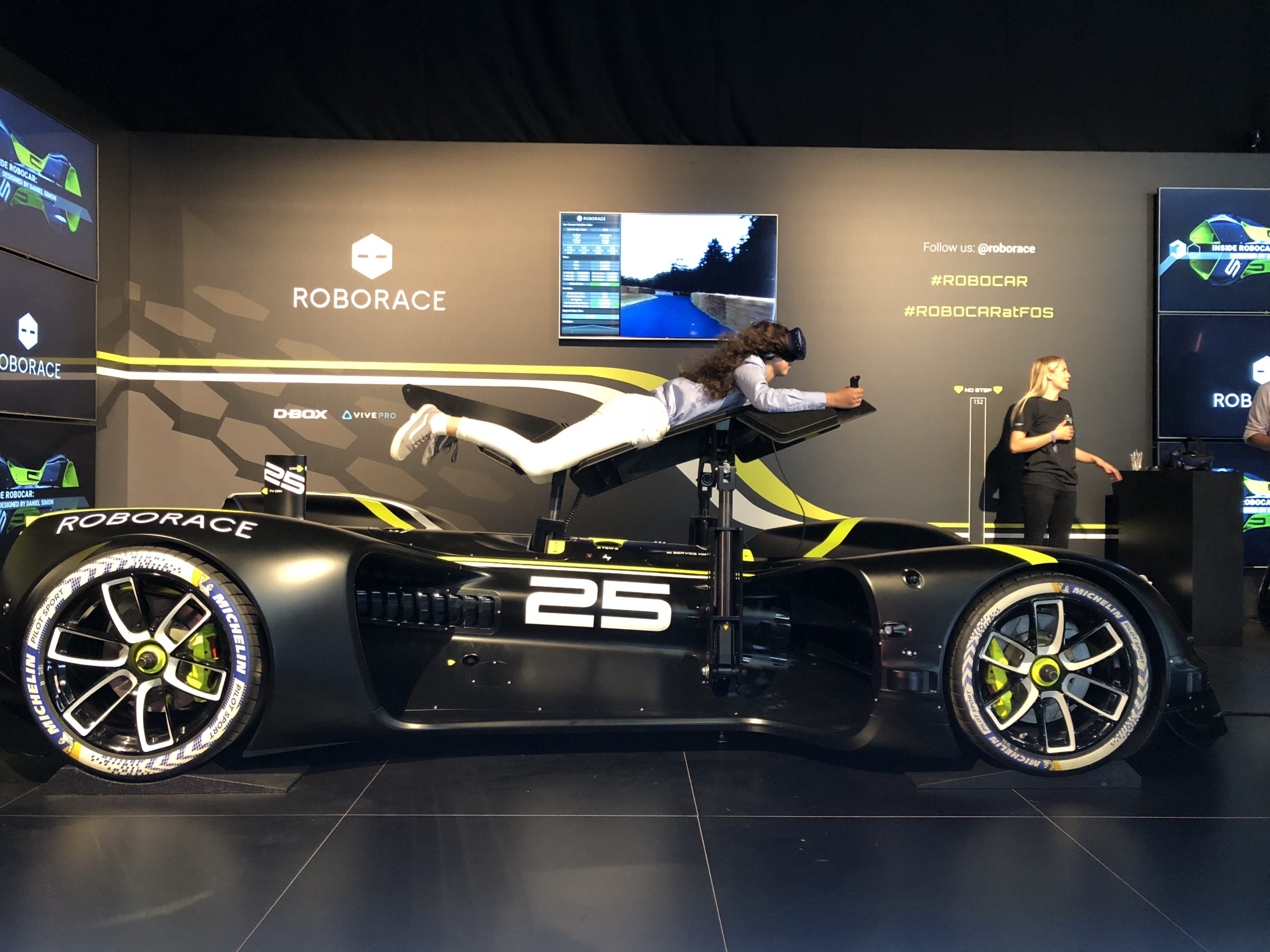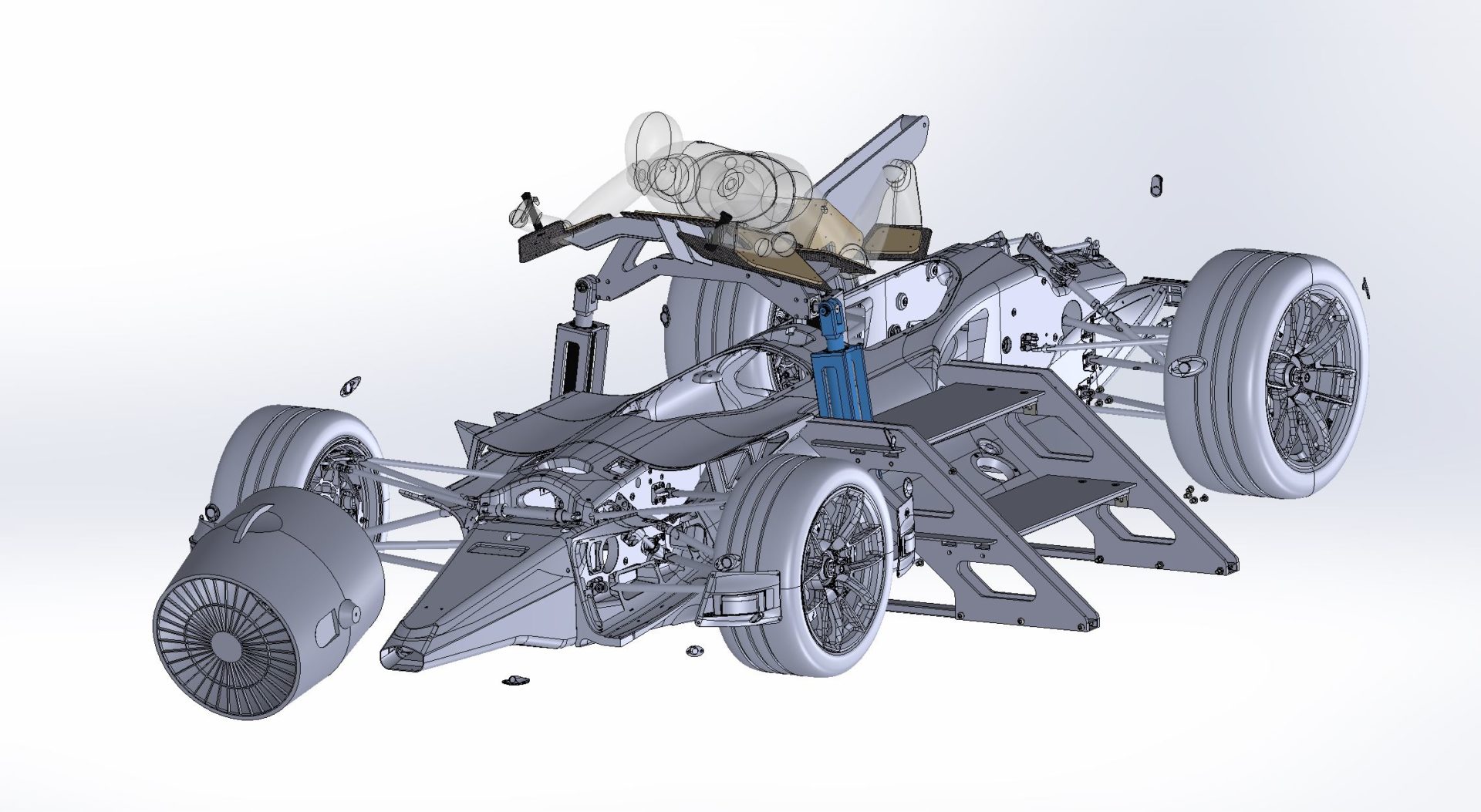The CXC Special Projects Division sits behind closed doors at the CXC Simulations facility in Hawthorne, California because that’s where the super-secret stuff happens. When the doors do open, something special comes out.
The CXC Special Projects Division is where projects that fall outside of our normal simulator builds end up. They have developed highly personalized simulators, made simulators out of Formula 1 race cars, and created virtual race cars for clients. In short, when a client has a big idea, CXC Special Projects Division can execute it.
RoboRace had a big idea, and what emerged from CXC’s Special Projects division was the RoboRace simulator. It’s not a traditional simulator because the Robocar isn’t a traditional race car. For starters, it has no driver – and not even any space for a driver – because it is driven by a computer utilizing Artificial Intelligence. The Robocar made it up the hill during the Goodwood Festival of Speed in 2018 utilizing 360-edgree vision that relies on LiDAR, radar, ultrasonic, and optical speed sensors, six artificial intelligences cameras and a GPS.
It’s also not slow. Robocar has four 135 kW electric motors using a 500 kW battery which produces 500 horsepower, and can reach 200mph, and surprised the automotive and motorsports industries when it became the first autonomous car to complete the course at the Goodwood.
Before Goodwood, Roborace commissioned CXC Simulations to build a simulator that would allow the experience of the Robocar with spectators.
“They told us, ‘we have this product that a lot of people don’t understand because it’s an A.I. – driven race car,” said Chris Considine, President of CXC Simulations. “And for us, that means the car wouldn’t really be a basis for a driving simulator. It would be an experience, and something you would ride.”

What sets CXC Simulations apart from its competitors is the company’s proprietary motion-control system. Combined with other CXC Simulations features such as a hydraulic braking system, seatbelt tensioners, tactile transducers and force-feedback steering wheels – all tuned and programmed by CXC Simulations engineers – the simulator accurately replicates the sensation of being on a race track.
But in order to create a similar experience without the sensation of driving, CXC Simulations opted to build a deck above a Robocar which moved with the use of electric actuators powered by a motion-control system. To fully immerse the rider, a Virtual Reality headset is used, with wind fans blowing on the rider to simulate the sensation of riding on the Robocar.
The response from spectators was overwhelmingly positive and helped to drive home the high-performance nature of the Robocar. CXC’s Special Projects Division helped to convey what is possible with a car driven by A.I.
Let us know how CXC can help bring your big idea to life.

